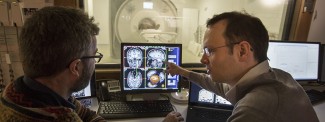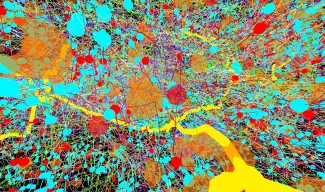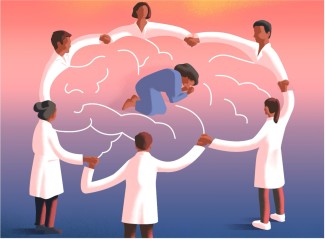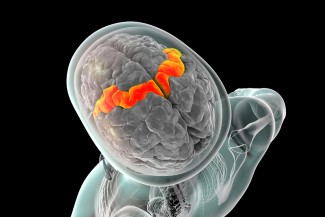Teams from the Assistance Publique-Hôpitaux de Paris, the Pierre and Marie Curie University, the Inserm and the CarThera company, hosted at the Brain and Spine Institute (Institut du Cerveau - ICM), coordinated by professor Alexandre Carpentier, neurosurgeon at the Pitié-Salpêtrière hospital, AP-HP, have been successfully using ultrasound to temporarily make cerebral blood vessels permeable in patients with a recurrent malignant brain tumour. This innovative method allows to increase the diffusion of treatments, including chemotherapy, in the brain, and represents hope for other brain pathologies. This work was published on June 15 in the Science Translational Medicine international magazine.
Today, the treatment of malignant primary brain tumours relies on a neurosurgical act, followed by chemotherapy sessions and/or radiation therapy. These treatments lead to a remission of disease of variable duration, depending on patients. The Blood-Brain Barrier (BBB), this particularly hermetic vascular wall, in order to limit neuron exposure to toxic agents, limits the release, and thus the diffusion of treatments into the brain.
In view of this fact, Pr Alexandre Carpentier's team, Dr. Ahmed Idbaih's team, and the neuro-oncology group from the Pitié-Salpêtrière hospital, AP-HP, launched in July 2014 a phase 1/2a clinical trial, promoted by the AP-HP, in patients in situation of recurrent malignant brain tumour . The purpose is to permeabilise the Blood-Brain Barrier to enhance the penetration and diffusion of chemotherapy drugs in the brain, through the "SonoCloud® " ultrasonic device developed by the CarThera company. Implemented on the thickness of the skull, this device is activated a few minutes before the intravenous injection of the product. Emitting ultrasounds for two minutes is enough to temporarily permeabilise the BBB for 6 hours, thus enabling the diffusion of the therapeutic molecule in the brain 5 times better than usual.
At this time, and for the first time in the world, several repeated "openings" of the BBB have been observed in the 20 patients treated.
Tolerance is also excellent: the technology invented by Pr Carpentier and developed by the CarThera company, with the help of the LabTAU physics laboratory of the Inserm, does not alter neurons and the BBB closes spontaneously 6 hours after the intravenous infusion.
According to Pr Alexandre Carpentier, " this innovative approach provides hope for the treatment of brain cancers, but also other brain pathologies, such as potentially Alzheimer's disease, for which existing therapeutic molecules struggle to enter the brain. This technique should continue its assessment process to consider an evolution to clinical routine in a few years ".
This topic was the subject of a report broadcasted at the TF1 8 o'clock news on June 16, 2016, available for replay (see at 29’40).
Sources
Clinical trial of blood-brain barrier disruption by pulsed ultrasound.
http://stm.sciencemag.org/content/8/343/343re2
Alexandre Carpentier and al. Science Translational Medicine, 15 Jun 2016.







